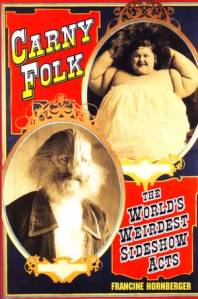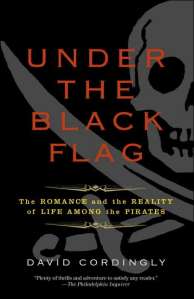
My first impression of this book is not good. It comes across as very a dry and intellectual study that discusses capital punishment on a scientific, social, historical, and psychological level. So it seems far more scholarly than accessible. It’s also undoubtedly biased. I’m not saying I agree or disagree with the author’s views, but my own biased opinion is that we may get the most out of our reading experience if we’re just given the facts and left to come up with out own uncolored opinions. This is of course not to say that you can’t learn from this book. Here are your Strange Notes:
Chapter One
-In 1846 Claude Bernard discovered that carbon monoxide kills by displacing oxygen in the blood.
-The study of things that kill people is very dangerous for animals, especially dogs for some reason 😦
-Eugenicists were the first people to popularize the idea of gas for killing people, and their ideas were surprisingly popular. It hadn’t really caught on yet what a sinister idea this eugenics stuff was. Fun fact – Eugenics is where we get the word euthanasia.
-While people 100-150 years ago searched to find a more humane way of carrying out capital punishment, they didn’t want the method to be too humane, or they feared it wouldn’t work enough as a deterrent. For this and a few other reasons, lethal injection was rejected by a New York commission in 1878. Gas was considered, but it was generally thought the technology wasn’t advanced enough yet and so electrocution won out.
-Many 19th century Americans really hated poor people. They lumped them together with criminals and the mentally handicapped as problem of society best dealt with by simply getting rid of them. Preferably by gas.
-The SPCA in the early 20th century euthanized a shit ton of animals with gas in an effort to prevent the spread of disease.
-Eugenics greatly influenced the Nazis. Big shocker, there.
-Late 19th century and early 20th century society was surprisingly upsetting.
Chapter Two
-Poison gas (chlorine) was used in war for the first time by the Germans, in April 1915 in Flanders during WWI. 5000 people died. It was the beginning of chemical warfare.
-Before this, stink bombs were not just a nasty prank but a nasty weapon of war. Too nasty, apparently, for use even in the American Civil War. No, they thought it more polite to just shoot and hack their opponents to pieces. Apparently fields full of rotting corpses smelled good back then.
-The British responded to the Germans’ use of gas by their own poison gas weapons and protection such as gas masks. A goth fashion trend was born.
-The rest of the allies joined in, and suddenly this whole chemical warfare deal was in full swing.
-The British invented the gas chamber as a way to test different poison gases. Somehow, they actually managed to get volunteers to sit in the thing.
-When America joined the war in 1917, they weren’t prepared for what was being called “the chemist’s war.” They had to get their shit together quick, and everybody pitched in. They did a fabulous job. It scared the shit out of the Kaiser and he surrendered.
-After the war, the leftover gas was dumped into the ocean.
Chapter 3
-Well, the war was over and the government and the people thought they wanted to shut this deadly industry down. But the guys running it said NOPE! and fought to have it continued. Surprisingly, they won, because they argued that it would make sure nobody would fuck with America and because such new technologies can always find nifty uses during peacetime. Though I have the feeling at least a tiny bit of this had to do with them not wanting to lose their jobs. Firefighting masks were invented, bugs were fumigated, and things just marched along.
-Poison gas became so prevalent for its use as a pesticide that this was not good news for food or the environment. Propaganda told people that it was not only totally safe, but even good for you, which must have led people to wonder if they had won the war by loving their enemies to death.
-in 1921, after years of industrial use, it was suggested that lethal gas should be implemented as a humane form of execution. Nevada was the first to establish this with the Humane Execution Bill, signed on March 28, 1921. The idea was to put prisoners to death while they were asleep, and with a dose of gas so high that death would happen quickly.
-Meanwhile, a bunch of really boring political and industrial things went on with these gas companies, and the deaths they caused got overlooked because, hey, there are non-white people trying to get into the country! The horror!
-Hey, maybe we should start using this gas stuff to scare the communists that are obviously absolutely everywhere.
-None of this is making any sense.
Chapter Four
-Nevada got to try out their new execution law 5 months after it was enacted. The case was two men who shot and killed an old man. It was Chinese-on-Chinese gangster violence. Because people were totally racist and viewed Asians as “the yellow peril,” they thought this was just dandy. These became the first two guys “eligible for execution under the world’s first lethal gas statute.” Fun fact: Among the many inevitable appeals, their own lawyer appealed because he thought they had a “racially inferior mental ability” making them unable to tell the difference between right and wrong.
-The gas chosen was hydrocyanic acid.
-Eventually one of the two men succeeded in having his life spared. The other did not, as well as a Mexican-American prisoner who had been condemned to death afterwards in January 1924. Then the night before the execution, the Mexican-American was also spared.
-The first execution by HCN gas took 6 minutes. There was no autopsy (unusual) because opening up his body was thought too dangerous.
-The news went around the world and soon enough reached the very interested Hitler.
-Hitler’s idol was Henry Ford. Huh.
Chapter Five
-Well, execution by gas had some bugs to be worked out. One of the things they did was to totally rebuild the shitty “death house” where the executions would take place.
-The second execution, and the first to take place in this new execution chamber, was in 1930. This time instead of gas spraying into the room, 10 cyanide eggs were dropped into sulfuric acid and water to create HCN. The execution was pronounced a success. However they were hiding that it took a while for the prisoner’s heart to stop beating.
-More states started to consider this method of execution. Arizona was the first to adopt it, in 1933. Then came Colorado, which was full of the KKK, so there was a lot of lynching there and they were ready for a change.
-Colorado’s gas chamber was state of the art, and became famous. It was probably huge in Germany.
-The first guy to get executed by gas in Colorado, William Cody Kelly, insisted he was innocent but he didn’t have the $200 it would have cost to prepare a trial transcript. There was a woman willing to help him out but they didn’t want it to get out that she was FDR’s wife’s buddy. So Kelly was screwed. It took him 30 seconds to die. They said it was the most humane execution ever, and the cheapest at 90 cents. It became famous.
-More executions happened, more states adopted the method, and more improvements were made to the system. The world paid attention, particularly, of course, Germany. This was all despite a ton of debate over how humane this method really was. A lot of people were pretty horrified.
Chapter Six
-A lot of people work for a lot of big companies and have ties to the Nazis and it’s all very shady. But I wouldn’t be surprised if shit like that was still happening now. Moving on….
Chapter Seven
-America geared up for WWII. That’s about all.
Chapter Eight
-The Nazis start using gas to “euthanize” mental patients. They progressively get more and more evil. This is of course an extremely important part of history, but I do wonder a little what the use of gas to murder people in Europe has to do with American capital punishment. The Nazis were undoubtedly influenced by this, but maybe this book should have been retitled.
-It was argued that the Americans had known all along what was being done in Germany, and the government was urged to act on this by bombing Auschwitz and/or the railroad line leading to it which carried the jews there. But they didn’t. They thought it was not practical, because air support was needed elsewhere and they didn’t want more retaliation from the Germans.
-The American chemical company IG Farben was implicated in the German gassings and fought to hide the evidence.
-American hypocrisy is not lost on us.
-Bigwigs at the American chemical companies mentioned above got in trouble at the Nuremberg trials.
-I go cross-eyed with boredom.
Chapter Nine
-So everybody was pretty icked out by all the deaths in Germany, so many countries abolished the death penalty in the 50s. America did not, but feelings toward it were mixed for various social and political reasons.
-American executions in the 50s were dramatically down from where they were in the 30s.
-A condemned criminal, Caryl Whittier Chessman, becomes famous and starts a political shitstorm with his writing. After eight stays of execution he was finally put to death on May 2nd 1960 at San Quentin prison in California. He received a reprieve, but it was too late. The execution had already begun. The world was pissed.
-On May 23rd 1960 it was announced that Karl Adolf Eichmamm, Nazi war criminal, was “arrested” (illegally, ie kidnapped) in Argentina. He was executed on May 31st 1962. Everybody was reminded of the Holocaust.
Chapter Ten
-The number of executions dwindled, as the number of states who used it. In 1967 the execution of Luis Mongue became America’s last for a decade.
-On June 29th 1972 the US Supreme Court decided that the death penalty in all forms in which it was then performed was unconstitutional. There’s a lot of detail behind this I don’t care to go into. The debate became a big thing in the 70s. 34 states responded by passing new capital punishment laws. Rhode Island became the only state with the gas chamber as its method of execution. But nobody was ever put to death and the death penalty was abolished there in 1979.
-Ronald Reagan was very pro-capital punishment and suggested lethal injection as a more humane way to do it.
-In the case of Gregg vs Georgia the supreme court had another look and decided that capital punishment in itself was not against the eight amendment. After almost ten years of nobody being put to death, Gary Gilmore ended the streak when he was executed by firing squad in Utah on January 17, 1977. The guy actually demanded to be put to death.
-Texas and Oklahoma became the first states to adopt lethal injection.
Chapter Eleven
-On October 22, 1979, Jesse Walter Bishop became the first person to be executed by gas since Luis Mongue.
-States start to realize that lethal gas is a shitty way to die, and switch to lethal injection.
-Fred A. Leuchter, a consultant on execution methods, is exposed as being a Holocaust denier and Hitler fan.
-On October 4, 1994, the district court a San Fransisco ruled that execution by lethal gas was unconstitutional. They had finally realized that it caused death by suffocation and caused the victims to suffer.
Chapter Twelve
-Walter LaGrand, a German national, became the last person to be executed by gas on March 3, 1999. Germany was pissed and the International Criminal Court found in their favor.
My conclusion? That was boring as fuck. I’m relieved that it’s finally over so I can be put out my misery. NEXT!
Other strange reads: Edison and the Electric Chair, Doctors From Hell








